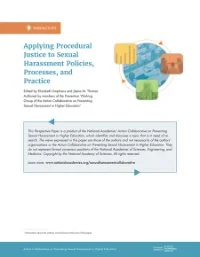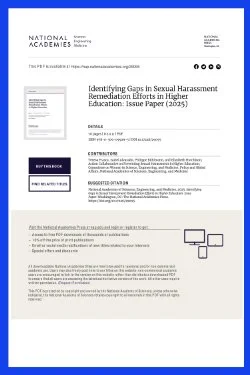By Umphress, E., and Thomas, J. M. (Eds.)
The 2018 National Academies report Sexual Harassment of Women: Climate, Culture, and Consequences in Academic Sciences, Engineering, and Medicine recommends the creation of institutional policies that can improve an institution's climate, culture, and reporting options while supporting those who have experienced sexual harassment.
This perspective paper addresses the 2018 report recommendations by exploring how a procedural justice framework could help guide improvements and revisions to policies, processes, and practices within higher education institutions with the potential to mitigate the negative experiences and outcomes of those affected by sexual harassment. Based on previous research, this paper applies a principles-based perspective to highlight ideals, rules, and standards that institutions can implement to achieve this goal.
Washington, DC: The National Academies Press. https://doi.org/10.17226/26563. 2022. 33p.



